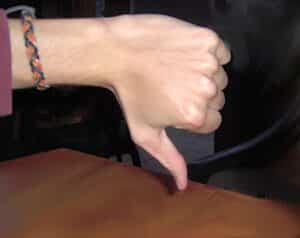To Build Consensus, Part 2

When addiction is the topic, there are all sorts of side roads to wander down, like the Rat Park experiment, in which rodents were given the opportunity to live in a community, and the wherewithal to engage in interesting and satisfying activities. In this environment, they surprised everybody, except Prof. Bruce Alexander, by ignoring the free dope dispenser.
Another group that confounded expectations was the heroin-addicted Vietnam veterans, as mentioned by Dr. Pretlow in the presentation introduced in the previous post. Once their life situation was improved by getting out of the war zone, most of them dropped the habit with few repercussions.
This is one of the odd circumstances that causes some experts to suspect that maybe it’s not the food or the additives, or even the urge to eat incessantly, that causes obesity. Maybe it is the environment, both outer and inner. In many ways, it appears that a person’s life situation has a lot to do with their predilection to become addicted.
This leads, in the presentation, to a discussion of the life situation experienced by an animal who “cannot readily face, yet cannot avoid, situations involving uncertainty, confusion, conflict, or feeling trapped, threatened, or thwarted.” Animals feel stress, just like people, and react to it in ways that might tell us something about ourselves.
Addictive behavior
To Dr. Pretlow’s mind, the universal source of addictive behavior is displacement, an “innate, instinctual biobehavioral mechanism.” It is an adaptation strategy, nature’s way of ending a standoff. The stress of finding oneself torn between two opposing drives, like fight and flight, generates a lot of brain energy.
When two opposing drives are in equilibrium, that energy can be channeled into a third behavior, which fulfills certain qualifications. The stalemate can be broken by a displacement activity.
This is about how the brain copes with overflow mental energy, and how it can be persuaded to handle things differently. Animals engage in displacement behavior in stressful situations, like when threatened by a predator. Or, it could be not necessarily when life is directly threatened, but when their sense of how things should be is violated.
In the presentation, the example is given of a cat that was upset when a strange cat came into the house and ate its food. The victim was so stressed out that it would lick itself so vigorously that eventually the fur was removed, down to bare skin and beyond. Normally, an animal is presumed not to do anything against its very strong instinct for survival. But in this kind of impasse, it will even harm itself, which suggests to the observer that the urge must be irrepressible.
Your responses and feedback are welcome!
Image by Pat Hartman
The post To Build Consensus, Part 2 first appeared on Childhood Obesity News.
Source link








